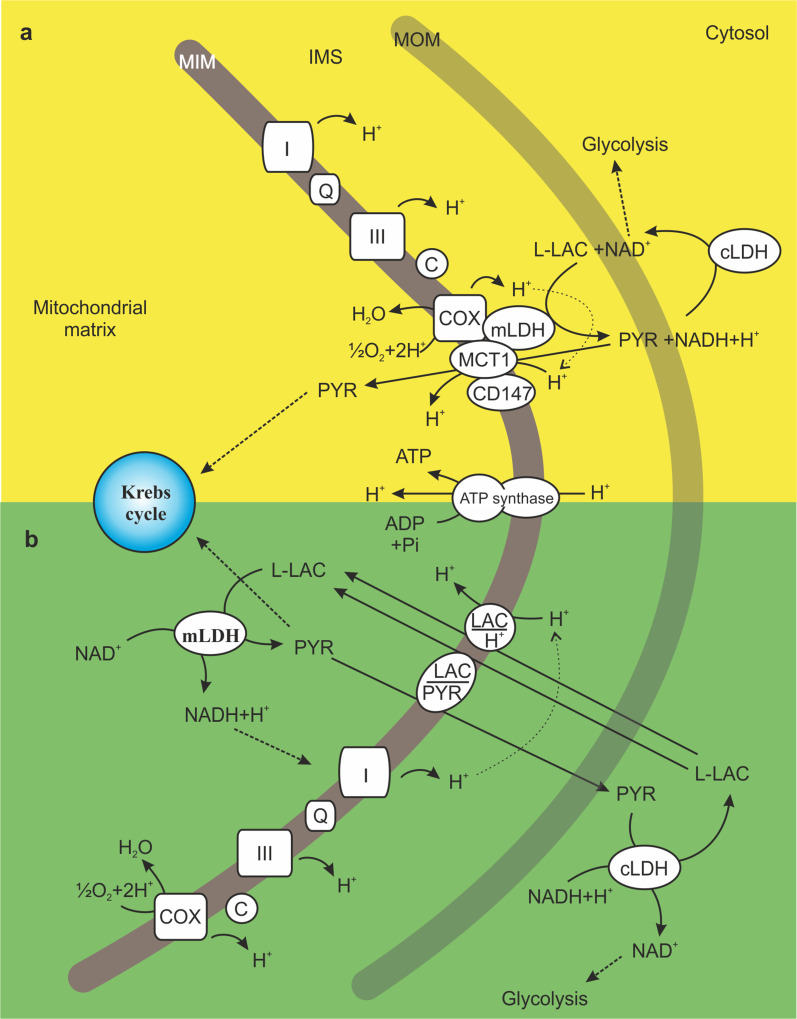Scheme 3.
Proposed models for l-LAC oxidation by mitochondria: the “mitochondrial lactate oxidation complex” (a) and the l-LAC/PYR shuttle (b). In a, l-LAC is proposed to be oxidized to PYR by the mitochondrial lactate oxidation complex formed by mLDH, the mitochondrial MCT1, cytochrome c oxidase (COX) and the chaperone protein CD147, which are located in the MIM. PYR is then transported into the matrix by MCT1 in symport with a proton. In b, l-LAC enters mitochondria by crossing the MIM via the putative l-LAC/H+ symporter and is oxidized by mLDH in the matrix. As a result, the cytosolic NADH is shuttled into mitochondria for its oxidation by complex I of the mRC. Newly formed PYR can leave mitochondria in exchange for cytosolic l-LAC, a transport process mediated by the putative l-LAC/PYR antiporter. In both a and b, l-LAC conversion into PYR is favored by PYR removal by transport proteins and/or via the Krebs cycle. The transport of PYR (a) or l-LAC (b) across the MIM is favored by the mitochondrial proton gradient generated by mRC activity

